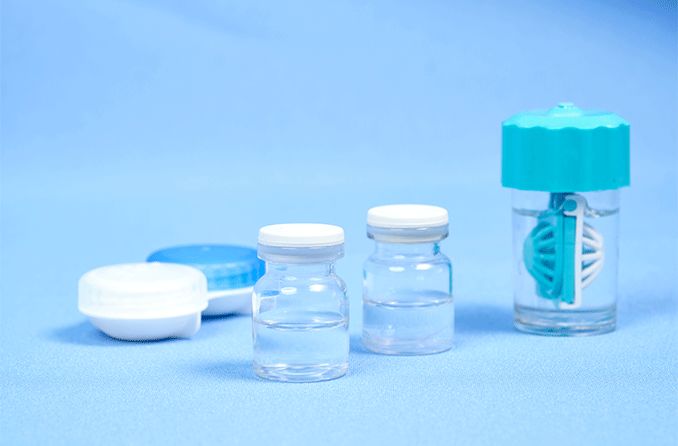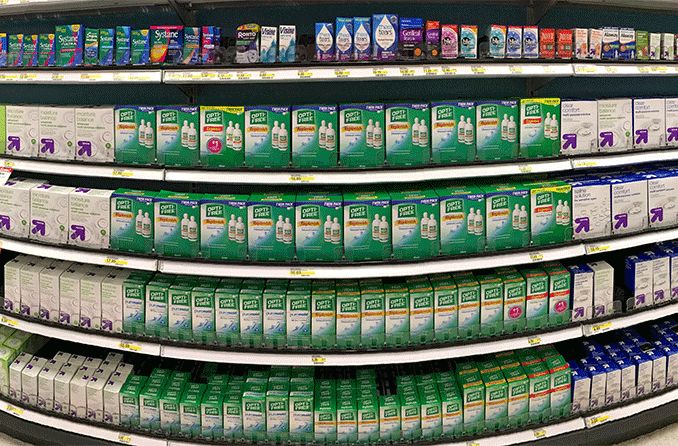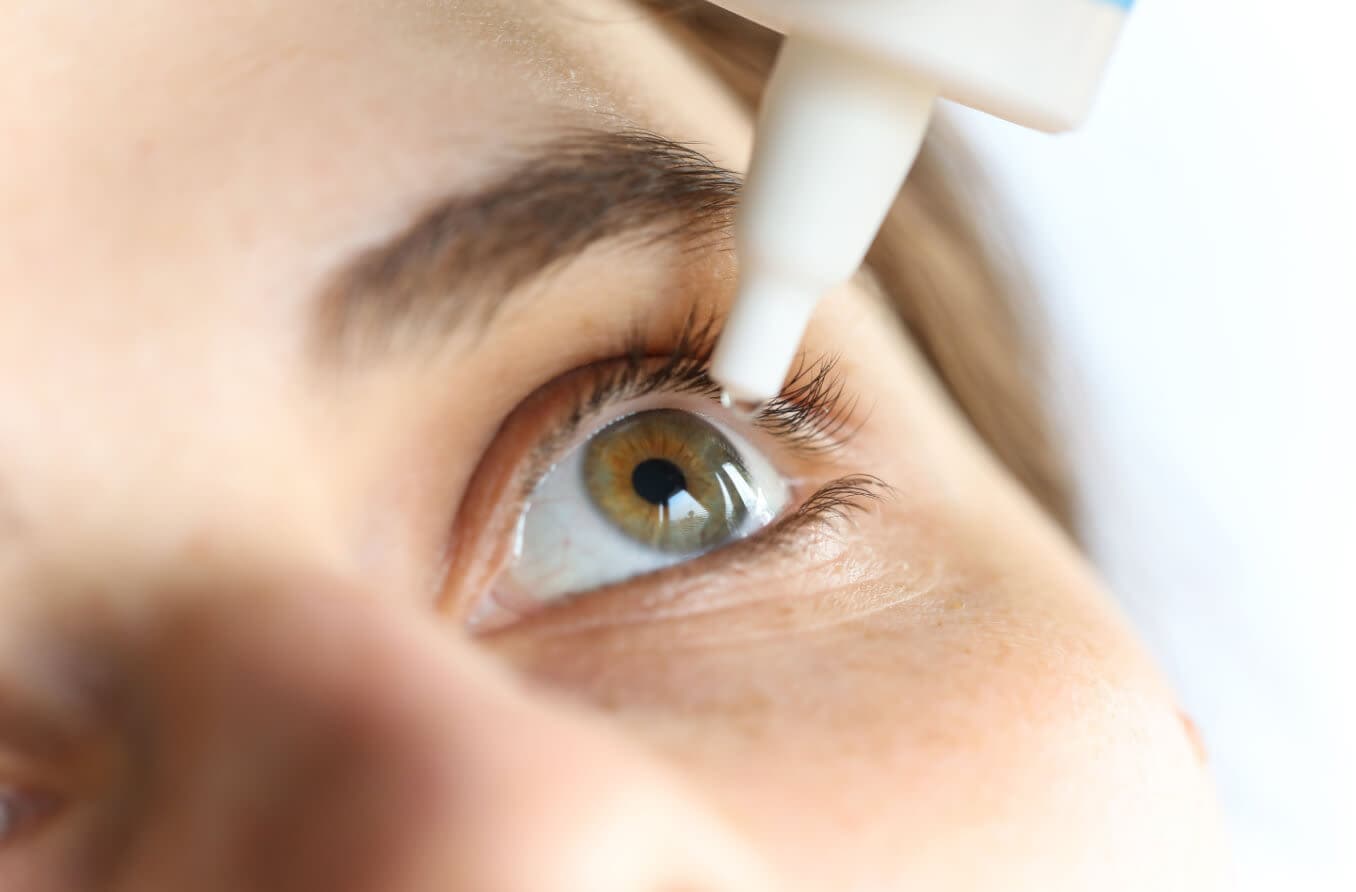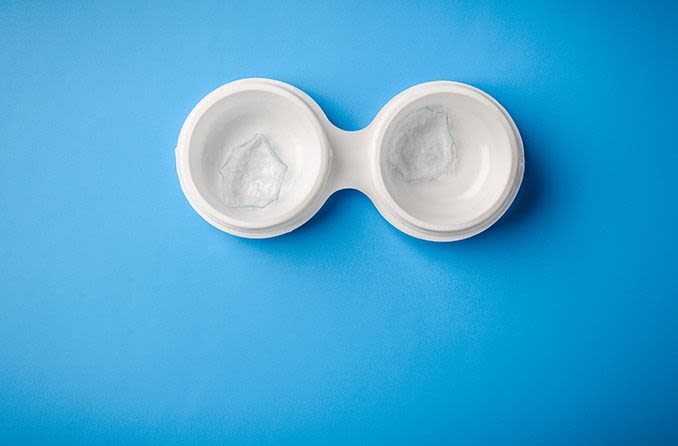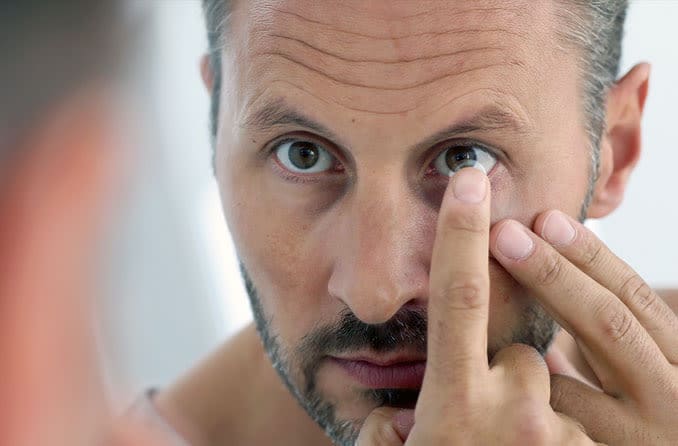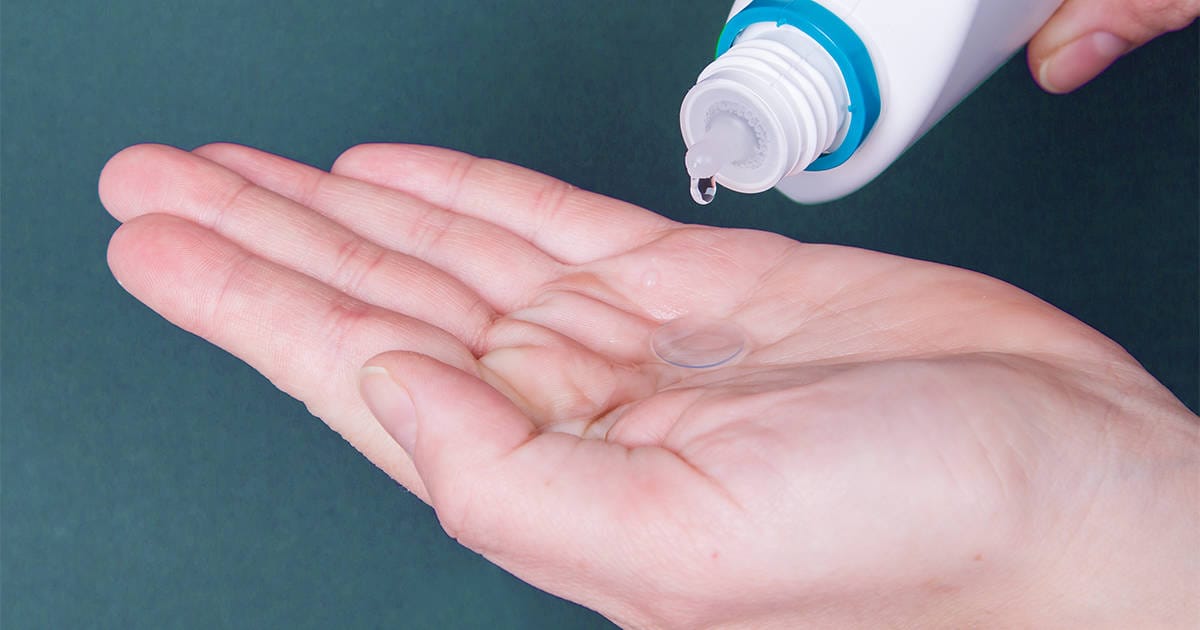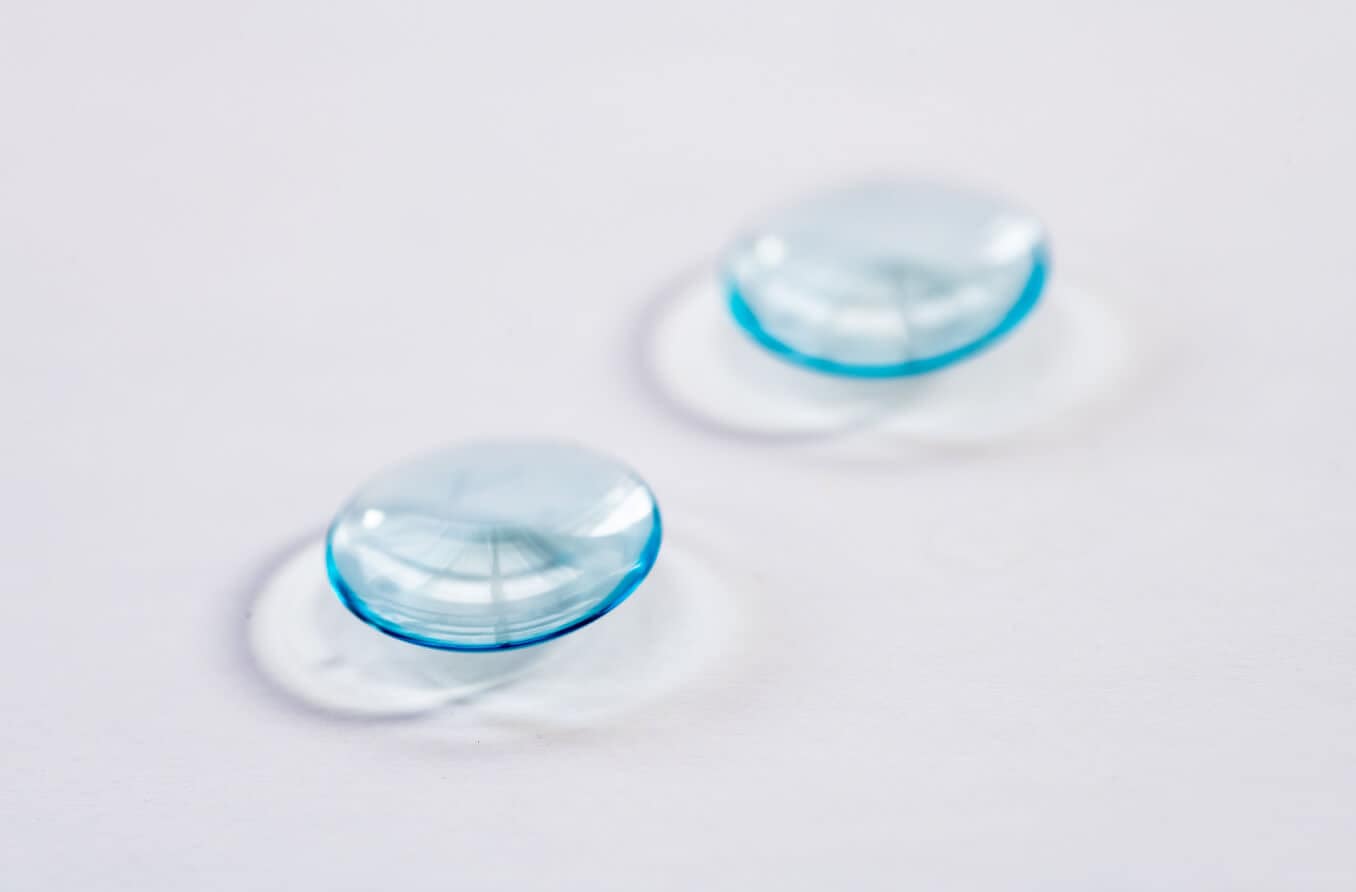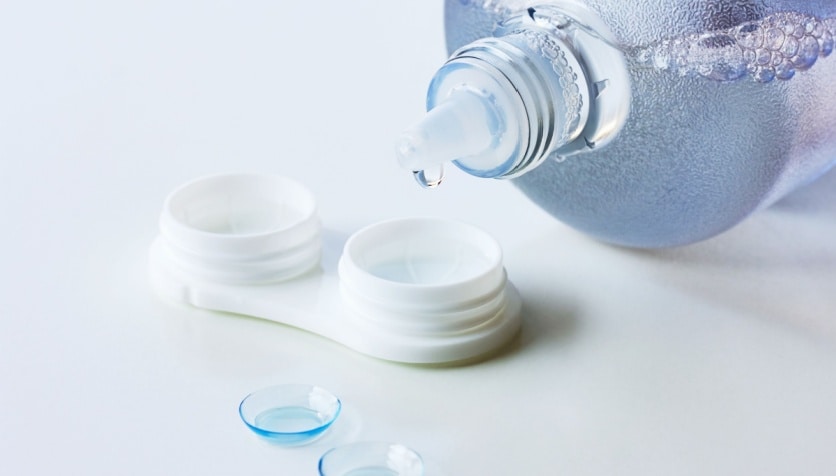If you wear contact lenses and have sensitive eyes, you’re likely familiar with a common struggle — contacts can cause redness, dryness and itchiness, making them feel like more of a pain than they are worth.
Because of these issues, many contact wearers seek relief and turn to Clear Care contact lens solution, one of the most popular brands of hydrogen peroxide-based solution.
This alternative to multipurpose solutions boasts numerous benefits, including superior cleaning. But there are also risks and drawbacks associated with hydrogen peroxide solutions, and disinfection needs to follow certain steps to be done safely and properly.
Knowing more about how hydrogen peroxide solutions such as Clear Care stack up against others lens cleaning solutions can help you decide whether this system is right for you.
Clear Care vs. multipurpose solution
Unlike daily lenses, which you can toss in the trash each night, contact lenses that you take out and use more than once require regular disinfecting with contact solution. This important step keeps them clean and safe so that your contacts don’t damage your eyes.
The two types of contact lens cleaning solutions are:
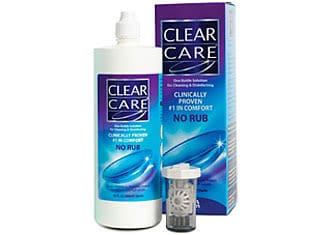
Hydrogen peroxide systems may help wearers who are sensitive to preservatives used in multipurpose solutions.
- Hydrogen peroxide-based solutions, such as Clear Care
- Multipurpose solutions
According to the American Academy of Ophthalmology, “Both kinds remove debris and buildup when used properly, but they work in different ways.”
Multipurpose lens solutions clean and disinfect your contact lenses quickly. This option tends to be more convenient — and often cheaper too. For these reasons, multipurpose solutions are a popular choice.
On the other hand, hydrogen peroxide-based solutions, including Clear Care, require a bit more time and effort. They provide intense disinfection, but your lenses must be soaked for at least six hours. This, plus the fact that these lens cleaning solutions are often more expensive, makes Clear Care slightly more of a commitment than multipurpose solutions.
SEE RELATED: Which contact solution is the best?
How does Clear Care work?
Hydrogen peroxide has long been used for a variety of disinfecting purposes — from sanitizing cuts and scrapes to general household cleaning. While this type of solution consists of just water and oxygen, it is a strong disinfectant that destroys bacteria quickly.
The same idea applies to eye care, though it is never safe to put hydrogen peroxide directly into your eyes or into your contact lens case.
Enter the hydrogen peroxide solution.
This system uses 3% hydrogen peroxide (as well as a neutralizer to access the cleaning powers of hydrogen peroxide) without causing any damage to the eye. That’s because the neutralizer makes it safe to disinfect your lenses effectively.
How does Clear Care compare to other hydrogen peroxide-based solutions?
Not all hydrogen peroxide-based lens solutions are created equal. First, there are two types: one-step and two-step solutions.
With two-step solutions, you need to add a neutralizing tablet to the solution after it is done cleaning. If you forget to add neutralizer, you can cause severe damage to your eyes.
One-step solutions, including Clear Care, have the neutralizer conveniently located in the case, which means there is no risk of omitting this step and ruining your contact lenses or seriously damaging your eyes.
Plus, Clear Care boasts a unique and recognizable case. The Clear Care lens cases have:
- A lens basket to keep your contacts in place.
- A fill line to ensure you use the proper amount of solution.
- A platinum disk to activate bubbles and neutralize the hydrogen peroxide into a safe saline solution.
Clear Care cases — which come with your purchase of the lens solution — keep the whole cleaning process self-contained, making the Clear Care system a popular one.
Clear Care vs. Clear Care Plus
Dry eyes? It’s a common complaint among contact wearers, and it can be very uncomfortable. Instead of relying on eye drops for moisture, Clear Care Plus combats dry eyes related to contact lenses thanks to an added component — the signature HydraGlyde Moisture Matrix.
This ingredient is intended to provide extra moisture and reconditioning to your soft contact lenses while the cleaning solution disinfects them.
One downside is that Clear Care Plus tends to be more expensive than Clear Care — which is already more expensive than multipurpose solutions. For some people, this added expense may be a reason to forego the additional moisture.
What about Clear Care Rinse & Go?
If you need to store your contacts temporarily (for instance, if you get something in your eye) or you want an extra rinse for your lenses, Clear Care is not going to help.
However, Clear Care Rinse & Go can help — it was developed for times like these when a hydrogen peroxide solution is too much. The Rinse & Go solution is not a multipurpose lens solution. It will not clean or disinfect your lenses, and it should not be used for more than 30 days of storage of your lenses.
Still, products like Rinse & Go are a popular option for people who use hydrogen peroxide-based lens solutions — it’s good to keep on hand, just in case.
Benefits of Clear Care contact solution
Over the past decade or so, many people have made the switch from multipurpose solutions to hydrogen peroxide solutions, such as Clear Care. There are a few reasons for this shift in popularity.
To start, Clear Care is preservative-free. Many people today avoid preservatives in foods and household products — and they like to avoid them in their eye care as well.
Also, if you have any allergies or sensitivities to chemicals, hydrogen peroxide solutions are often a better, more comfortable choice to clean your lenses.
Finally — and possibly the most important factor — hydrogen peroxide solutions are very good at disinfecting your contact lenses. Some studies have shown that Clear Care and similar products are 100% effective at killing certain bacteria with the recommended soaking time.
This enhanced cleaning is a significant draw for many contact lens wearers.
Drawbacks of Clear Care contact solution
While Clear Care and similar lens cleaning systems come with plenty of benefits, there are some downsides to take into account.
Price
Clear Care is typically more expensive than multipurpose solutions. If you decide to commit to using Clear Care, you should expect to shell out a little more cash for each purchase. And because you will need to continually replenish your supply, this is not a one-time expense.
Luckily, Clear Care coupons are fairly easy to find. In fact, if you are willing to receive product news and other eye-related information, you can find coupons on the Clear Care website by signing up for their email newsletter.
Soaking time
Additionally, with Clear Care, you must be prepared to soak your lenses for at least six hours. If you are the type of person who prefers to take out your contacts for a few hours at a time (for exercise, to simply take a break from contact lenses, etc.), Clear Care might not be your best option.
In order to keep your eyes healthy and safe, six hours is an absolute must for soak time. If you need to quickly rinse your lenses before wearing them, a multipurpose solution is the way to go.
Solution restrictions
Clear Care solution cannot be reused. This is because once the solution is neutralized, it has completely lost its ability to disinfect your lenses. And, unlike multipurpose solutions, you can’t top off the solution after it has been neutralized.
There is also a slight learning curve with hydrogen peroxide solutions, and it is critical to follow directions precisely.
The contact lens case
It’s very important to dry your Clear Care lens case thoroughly between uses. Otherwise, bacteria can build up and cause damage to your eye.
You also need to make sure that you replace your lens case regularly to avoid infection — you should get a new one at least every 100 uses. (Fortunately, a Clear Care lens case comes with each purchase of the solution, so this should be easy to remember.)
What happens if I get Clear Care contact solution in my eye?
Another potential drawback? Getting hydrogen peroxide in your eye. If a hydrogen peroxide-based solution gets in your eyes, it can lead to:
- Stinging
- Pain
- Redness
- Excessive watering
- Corneal abrasion (a scratch on your cornea)
- Corneal ulceration (an open sore on your cornea)
If this does happen to you, flush your eye (or eyes) immediately with saline solution (if you have it) or artificial tears. Continue doing this until you are sure the chemical has been thoroughly rinsed out and your eyes begin to feel better.
It’s also a good idea to make an appointment with your eye care provider. Both corneal abrasions and ulcers can cause serious damage if they go untreated, so you should get checked out right away if you’ve had hydrogen peroxide in your eyes.
Finding the contact lens solution that’s right for you
Cleaning your contact lenses is crucial for the health and comfort of your eyes. There are a number of choices for how to go about this, and it’s important to find what works best for you.
If you have sensitive eyes or want the enhanced cleaning you can get with a hydrogen peroxide system, Clear Care might be a good option. It’s convenient, popular and effective.
At the same time, it is a commitment — both in terms of time and money. You must be prepared to soak your lenses for at least six hours or have a Rinse & Go solution (or another similar product) on hand. You’ll also need to be prepared to pay a little more each time you need to replenish your supply of contact solution.
If you have been using a multipurpose solution and are satisfied, you may not have any reason to switch. However, if you’re looking for more intensive cleaning and relief from discomfort, it may be worth it to give Clear Care products a try.
READ MORE: Caring for your soft contact lenses
